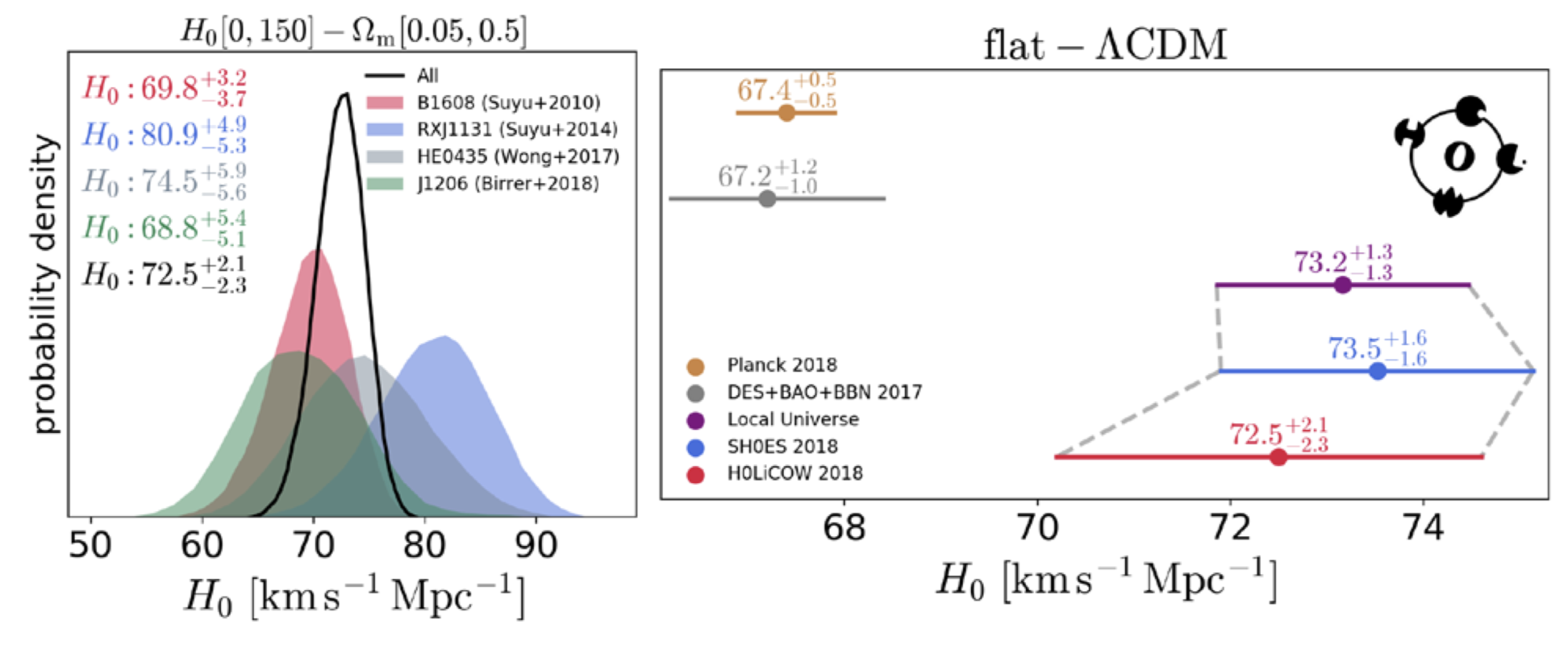Dark Matter with Lenses
Dark matter and dark energy are the dominant components of the universe in the standard cosmological model, yet are poorly understood. KAPA’s improvements will allow considerable progress to be made in the study of these components by observing strong gravitational lensing.
The standard cold dark matter (CDM) model predicts that galaxies like the Milky Way will be surrounded by large numbers of dark matter subhalos. These subhalos could be detected by strong gravitational lensing - their gravity can distort the light from a distant galaxy like a lens. The detection of dark matter subhalos could provide evidence to distinguish between cold dark matter and warm dark matter theories.
These lensing events require the source and lens to be closely aligned in the sky, which is a rare occurrence. They produce lensed images on the sub-arcsecond scale, which requires high angular resolution, and they involve objects at cosmological distances, which requires a high sensitivity. KAPA’s greatly increased sky coverage, high angular resolution, and increased sensitivity will allow it to observe three times as many lenses as the current system.

The time delay between different images in a gravitational lensing event can be used to calculate the distances to the source and lens, which can then be used to calculate the expansion rate of the universe (the Hubble constant H0). Currently there is tension between measurements based on the CMB and measurements based on the local distance ladder. Time delays offer a third independent method to calculate H0. KAPA’s improved resolution and sky coverage will allow for a precision of 1%, which could determine whether this tension is a statistical fluke, or requires a modification of cosmology.
